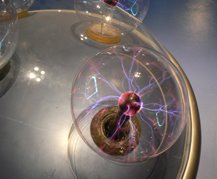definitions of web concepts
Blog/Weblog: site that is an ongoing chronicle of information, frequently updated, personal website.
It features diary type commentary and links to articles or other websites.
Characteristics:
- main content area organized chronologically, often into categories.
- -archive if older articles
- Way for people to comment on content
- List of links to other sites (blogroll)
- One or more ‘feeds’ like RSS, Atom or RDF
Content:
Articles/posts/entries regularly updated. Can either write online or offline and upload later.
Comments:
Readers can interact by leaving comments
Pingbacks/trackbacks are when you inform bloggers whenever you cite an article from another site. (like a trail)
Blog or CMS?
Cms – content management system, blogger software is a type of content management system for bloggers, which manages the site whilst the blogger inputs the content.
Archives:
Backlist of articles often based on date, can be based on categories, or alphabetically
Feeds:
Automatically monitoring a site and posts updates when new content appears. Eg RSS Atom
Blogrolls:
List of links to websites, often in a sidebar eg Blogrolling or blo.gs or del.icio.us
Syndication:
A feed is a machine readable (usually xml) content publication updated regularly.
Reads the feeds RSS or atom, and provides you with new stuff. You feed the links to the RSS feeds you are interested in into the feedreader and it will inform you of new posts.
Trackbacks:
person A writes something on their blog. Person B wants to comment on Person A’s blog, but wants her own readers to see what she had to say and to be able to comment on her own blog. Person B vcomments on own blog and sends trackback to person A’s blog
Person A’s blog receives the trackback, and displays it as a comment to the original post This comment contains a link to Person B’s post.(Can be faked)
Pingback:
Sound the same, but uses different technology (XML-RPC and HTTP POST. Harder to fake that trackback, both pingback and trackback aim to add some sort of verification to the comment process, as you can usually claim to be anyone at all.
Comment moderation:
Allows website author to monitor and control comments.
Comment Spam:
Useless comments/trackback/ping posted to a blog. Can contain links to other sites or domains. Can be managed.
Permalinks:
Permanent urls to your individual weblog posts, as well as catagories and other lists ofweblog postings. The url shouldn’t change as others may link to your individual postings.
Pretty permalinks:
Idea that the link should give some idea of what content is eg not /index.php?p=423 but /archives/2003/05/23/my-cheese-sandwich/ gives idea of date, subject, and gives user opportunity to hack into other articles by using /archives/2003/05/ for example.
Social Media:
Social media enable cultural participants to both explore images of themselves and
distribute those images across broad online social networks. Museums worldwide are
starting to use social media such as blogs, wikis and vlogs to engage online
participants with new interactive experiences.
From here


3 comments:
Mel, Russ put us onto an interesting post about corporate blogging - Google's Authentic Voice Problem
Interesting Lynda - to me it seems to emphasise the need to keep the 'voice' of a blogger as a personal one.
Hello. This post is likeable, and your blog is very interesting, congratulations :-). I will add in my blogroll =). If possible gives a last there on my blog, it is about the Monitor de LCD, I hope you enjoy. The address is http://monitor-de-lcd.blogspot.com. A hug.
Post a Comment